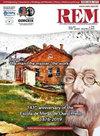The influence of tundish heating and purging on inclusion formation
Q3 Earth and Planetary Sciences
引用次数: 0
Abstract
Steel with high cleanliness requirements require an accurate control of the non-metallic inclusions, such as its quantity, morphology, chemical composition and size distribution. The continuous casting tundish has a fundamental role in steel cleanliness, avoiding its reoxidation by air and ladle slag that retain inclusions, as well as aiding the removal of those same inclusions along the continuous casting (Sahai, 2008). To perform the study, IF steel samples were collected in RH at the start, in the middle and at the end of the continuous casting of the tundish's first heat in three different conditions of tundish processing, alternating between heating and purging. These samples had their inclusions characterized by MEV/EDS using the ASCAT (Automated Steel Cleanliness Analysis Tool) technology. The results showed that more than 90% of the oxide inclusions generated in that type of steel are Al2O3 and AlTi. It was also observed that there is an increase of steel inclusions originating from RH in the tundish and that area fraction and average inclusionary density decreases along the continuous casting in two of the processing conditions.中间包加热和吹扫对夹杂物形成的影响
具有高洁净度要求的钢要求对非金属夹杂物的数量、形态、化学成分和尺寸分布等进行精确控制。连铸中间包在保证钢的清洁度方面起着至关重要的作用,它可以避免钢被空气和含有夹杂物的钢包渣再氧化,并有助于在连铸过程中去除这些夹杂物(Sahai, 2008)。为了进行这项研究,在三种不同的中间包加工条件下,在加热和吹扫交替进行的中间包第一次加热连铸开始、中间和结束时,在RH中收集IF钢样品。这些样品的夹杂物使用ASCAT(自动钢清洁度分析工具)技术进行了MEV/EDS表征。结果表明:该钢中产生的氧化物夹杂物中,90%以上为Al2O3和AlTi。在两种工艺条件下,中间包中源自RH的钢夹杂物增多,沿连铸方向面积分数和平均夹杂物密度减小。
本文章由计算机程序翻译,如有差异,请以英文原文为准。
求助全文
约1分钟内获得全文
求助全文
来源期刊

Rem-Revista Escola De Minas
工程技术-工程:土木
自引率
0.00%
发文量
0
审稿时长
6-12 weeks
期刊介绍:
REM – International Engineering Journal (antigua REM – Revista Escola de Minas) es la primera revista técnica de Sudamérica. Fue fundada en enero de 1936 por los estudiantes de la Escuela de Minas de Ouro Preto y desde entonces se ha especializado en la publicación de artículos en las áreas de la Ingeniería Civil, Geología, Metalurgia y Materiales y, Minería y Mecánica y Energía.
Su objetivo es servir como un medio de publicación para los trabajos técnicos y científicos originales de investigadores nacionales y extranjeros en esas áreas. Contribuciones originales (artículos y cartas) son aceptadas. Artículos de revisión dependen de la invitación y/o análisis de los Editores.
El envío de artículos para su publicación implica que el trabajo no ha sido publicado previamente, que no está siendo presentado para su publicación en otra revista y no se publicará en otro lugar, en la misma forma, sin el permiso, por escrito, de los Editores/Autores.
 求助内容:
求助内容: 应助结果提醒方式:
应助结果提醒方式:


